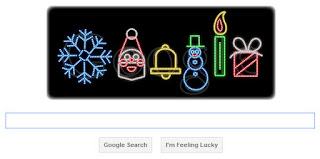Advertising > Peluang Usaha > SEO
Advertising is a form of communication used to persuade an audience (viewers, readers or listeners) to take some action with respect to products, ideas, or services. Most commonly, the desired result is to drive consumer behavior with respect to a commercial offering, although political and ideological advertising is also common. Advertising messages are usually paid for by sponsors and viewed via various media; including traditional media such as newspapers, magazines, television, radio, outdoor or direct mail; or new media such as websites and text messages.
Commercial advertisers often seek to generate increased consumption of their products or services through "branding," which involves the repetition of an image or product name in an effort to associate certain qualities with the brand in the minds of consumers. Non-commercial advertisers who spend money to advertise items other than a consumer product or service include political parties, interest groups, religious organizations and governmental agencies. Nonprofit organizations may rely on free modes of persuasion, such as a public service announcement.
Modern advertising developed with the rise of mass production in the late 19th and early 20th centuries. In 2010, spending on advertising was estimated at more than $300 billion in the United States and $500 billion worldwide[citation needed].
Internationally, the largest ("big four") advertising conglomerates are Interpublic, Omnicom, Publicis, and WPP.
Type Advertising
Virtually any medium can be used for advertising. Commercial advertising media can include wall paintings, billboards, street furniture components, printed flyers and rack cards, radio, cinema and television adverts, web banners, mobile telephone screens, shopping carts, web popups, skywriting, bus stop benches, human billboards, magazines, newspapers, town criers, sides of buses, banners attached to or sides of airplanes ("logojets"), in-flight advertisements on seatback tray tables or overhead storage bins, taxicab doors, roof mounts and passenger screens, musical stage shows, subway platforms and trains, elastic bands on disposable diapers,doors of bathroom stalls,stickers on apples in supermarkets, shopping cart handles (grabertising), the opening section of streaming audio and video, posters, and the backs of event tickets and supermarket receipts. Any place an "identified" sponsor pays to deliver their message through a medium is advertising.
Digital advertising
Television advertising / Music in advertising
The TV commercial is generally considered the most effective mass-market advertising format, as is reflected by the high prices TV networks charge for commercial airtime during popular TV events. The annual Super Bowl football game in the United States is known as the most prominent advertising event on television. The average cost of a single thirty-second TV spot during this game has reached US$3 million (as of 2009). The majority of television commercials feature a song or jingle that listeners soon relate to the product. Virtual advertisements may be inserted into regular television programming through computer graphics. It is typically inserted into otherwise blank backdrops or used to replace local billboards that are not relevant to the remote broadcast audience. More controversially, virtual billboards may be inserted into the background where none exist in real-life. This technique is especially used in televised sporting events. Virtual product placement is also possible. Infomercials: An infomercial is a long-format television commercial, typically five minutes or longer. The word "infomercial" combining the words "information" & "commercial". The main objective in an infomercial is to create an impulse purchase, so that the consumer sees the presentation and then immediately buys the product through the advertised toll-free telephone number or website. Infomercials describe, display, and often demonstrate products and their features, and commonly have testimonials from consumers and industry professionals.
Radio advertising
Radio advertising is a form of advertising via the medium of radio. Radio advertisements are broadcast as radio waves to the air from a transmitter to an antenna and a thus to a receiving device. Airtime is purchased from a station or network in exchange for airing the commercials. While radio has the limitation of being restricted to sound, proponents of radio advertising often cite this as an advantage. Radio is an expanding medium that can be found not only on air, but also online. According to Arbitron, radio has approximately 241.6 million weekly listeners, or more than 93 percent of the U.S. population.
Online advertising
Online advertising is a form of promotion that uses the Internet and World Wide Web for the expressed purpose of delivering marketing messages to attract customers. Examples of online advertising include contextual ads that appear on search engine results pages, banner ads, in text ads, Rich Media Ads, Social network advertising, online classified advertising, advertising networks and e-mail marketing, including e-mail spam.
Product placements
Covert advertising, also known as guerrilla advertising, is when a product or brand is embedded in entertainment and media. For example, in a film, the main character can use an item or other of a definite brand, as in the movie Minority Report, where Tom Cruise's character John Anderton owns a phone with the Nokia logo clearly written in the top corner, or his watch engraved with the Bulgari logo. Another example of advertising in film is in I, Robot, where main character played by Will Smith mentions his Converse shoes several times, calling them "classics," because the film is set far in the future. I, Robot and Spaceballs also showcase futuristic cars with the Audi and Mercedes-Benz logos clearly displayed on the front of the vehicles. Cadillac chose to advertise in the movie The Matrix Reloaded, which as a result contained many scenes in which Cadillac cars were used. Similarly, product placement for Omega Watches, Ford, VAIO, BMW and Aston Martin cars are featured in recent James Bond films, most notably Casino Royale. In "Fantastic Four: Rise of the Silver Surfer", the main transport vehicle shows a large Dodge logo on the front. Blade Runner includes some of the most obvious product placement; the whole film stops to show a Coca-Cola billboard.
Physical advertising
Press advertising
Press advertising describes advertising in a printed medium such as a newspaper, magazine, or trade journal. This encompasses everything from media with a very broad readership base, such as a major national newspaper or magazine, to more narrowly targeted media such as local newspapers and trade journals on very specialized topics. A form of press advertising is classified advertising, which allows private individuals or companies to purchase a small, narrowly targeted ad for a low fee advertising a product or service. Another form of press advertising is the Display Ad, which is a larger ad (can include art) that typically run in an article section of a newspaper.
Billboard advertising: Billboards are large structures located in public places which display advertisements to passing pedestrians and motorists. Most often, they are located on main roads with a large amount of passing motor and pedestrian traffic; however, they can be placed in any location with large amounts of viewers, such as on mass transit vehicles and in stations, in shopping malls or office buildings, and in stadiums.
The RedEye newspaper advertised to its target market at North Avenue Beach with a sailboat billboard on Lake Michigan.
Mobile billboard advertising
Mobile billboards are generally vehicle mounted billboards or digital screens. These can be on dedicated vehicles built solely for carrying advertisements along routes preselected by clients, they can also be specially equipped cargo trucks or, in some cases, large banners strewn from planes. The billboards are often lighted; some being backlit, and others employing spotlights. Some billboard displays are static, while others change; for example, continuously or periodically rotating among a set of advertisements. Mobile displays are used for various situations in metropolitan areas throughout the world, including: Target advertising, One-day, and long-term campaigns, Conventions, Sporting events, Store openings and similar promotional events, and Big advertisements from smaller companies.
In-store advertising
In-store advertising is any advertisement placed in a retail store. It includes placement of a product in visible locations in a store, such as at eye level, at the ends of aisles and near checkout counters, eye-catching displays promoting a specific product, and advertisements in such places as shopping carts and in-store video displays.
Coffee cup advertising
Coffee cup advertising is any advertisement placed upon a coffee cup that is distributed out of an office, café, or drive-through coffee shop. This form of advertising was first popularized in Australia, and has begun growing in popularity in the United States, India, and parts of the Middle East.[citation needed]
Street advertising
This type of advertising first came to prominence in the UK by Street Advertising Services to create outdoor advertising on street furniture and pavements. Working with products such as Reverse Graffiti and 3d pavement advertising, the media became an affordable and effective tool for getting brand messages out into public spaces.
Celebrity branding
This type of advertising focuses upon using celebrity power, fame, money, popularity to gain recognition for their products and promote specific stores or products. Advertisers often advertise their products, for example, when celebrities share their favorite products or wear clothes by specific brands or designers. Celebrities are often involved in advertising campaigns such as television or print adverts to advertise specific or general products. The use of celebrities to endorse a brand can have its downsides, however. One mistake by a celebrity can be detrimental to the public relations of a brand. For example, following his performance of eight gold medals at the 2008 Olympic Games in Beijing, China, swimmer Michael Phelps' contract with Kellogg's was terminated, as Kellogg's did not want to associate with him after he was photographed smoking marijuana.
Browse: Home > Advertising

 Ayo Indonesia Bisa
Ayo Indonesia Bisa













0 Comments:
Posting Komentar